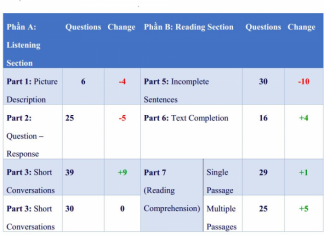Các từ nối trong tiếng Anh được sử dụng trong văn nói và văn viết nhằm mục đích dẫn dắt người đọc, chuyển ý, chuyển câu và thể hiện các mối quan hệ giữa các mệnh đề một cách rõ ràng, dễ hiểu hơn.
Vậy, để có thể viết và nói tiếng Anh một cách logic hơn, hãy trang bị cho mình những từ nối trong tiếng Anh cơ bản nhất mà bất cứ người học nào cũng cần biết dưới đây nhé.
Trước hết, chúng ta cần biết rằng, có 3 loại từ nối khác nhau:
1. Tương Liên Từ (Coordinators – C)
Từ, cụm từ nối các mệnh đề độc lập, tương đương nhau về mặt chức năng.
Vị trí: Đứng giữa 2 mệnh đề và sau dấu phẩy.
VD: I researched the topic, and I created the presentation.
2. Liên Từ Phụ Thuộc (Subordinators – S)
Nối giữa các mệnh đề khác nhau về chức năng: 1 mệnh đề chính và 1 mệnh đề phụ.
Vị trí: Khi mệnh đề phụ đứng ở đầu câu, sau mệnh đề chính phải có 1 dấu phẩy.
VD: After I researched the topic, I created the presentation.
Khi mệnh đề phụ đứng cuối câu, không sử dụng dấu phẩy.
VD: I created the presentation after I researched the topic.
3. Từ Chuyển Ý (Transitions – T)
Nối các mệnh đề độc lập trong cùng 1 câu, nối các câu trong cùng một đoạn văn.
Vị trí: Khi từ chuyển ý nối 2 mệnh đề độc lập trong 1 câu, hoặc 2 câu với nhau, nó phải đứng giữa 1 trong 3 cặp dấu sau: chấm – phẩy, phẩy – phẩy, chấm phẩy- phẩy.
VD: I researched the topic; afterwards, I created the presentation.
First, I researched the topic. Then, I created the presentation.
Danh Sách Và Cách Dùng Các Từ Nối Trong Tiếng Anh
1. Những Từ, Cụm Từ Dùng Để Thêm Thông Tin
|
Linking Words |
Cách Dùng Và Ví Dụ |
|---|---|
|
And |
Dùng để liệt kê: nếu có 2 người, vật được liệt kê thì trước and không có dấu phẩy, từ 3 người/ vật trở lên: and gắn với người/vật được liệt kê cuối cùng, có thể có hoặc không có dấu phẩy
VD: We discussed training, education and the budget. |
|
In addition/ In addition to/ Additionally |
Thường đứng đầu câu, dùng để giới thiệu thêm 1 điều gì bên cạnh cái đã nói ở trước
VD: Our new director can speak three languages. In addition, he has six years of experience.
In addition to + N/Ving,…. |
|
As well as |
Đứng đầu hoặc giữa câu, thường đứng trước N; dùng để đề cập đến cái gì đó tương đương
VD: As well as the costs, we are concerned by the competition.
We are interested in costs as well as the competition. |
|
Also |
Đứng sau tobe/ trước V/ giữa trợ động từ và V chính
Ít khi đứng đầu câu (informal)
VD: We also spoke about marketing. |
|
Not only….but also/but…as well |
VD: We are concerned not only by the costs but also by the competition
Chú ý cấu trúc đảo: VD: Not only did she forget my birthday but she also didn’t even apologise for forgetting it. |
|
Too |
Đứng cuối câu hoặc sau chủ ngữ
VD: They were concerned too. |
|
Furthermore |
Đứng đầu, giữa hoặc cuối câu; luôn nằm giữa 3 cặp dấu
VD: Community colleges offer preparation for many occupations; furthermore, they prepare students to transfer to a four-year college or university. |
|
Moreover |
Đứng đầu câu, giữa hoặc cuối câu, nằm giữa 3 cặp dấu
VD: Marketing plans give us an idea of the potential market. Moreover, they tell us about the competition.” |
|
Apart from |
Đứng đầu câu, giữa câu, theo sau là N Apart from + N
VD: Apart from Rover, we are the largest sports car manufacturer. |
|
Besides |
Thường đứng đầu câu, giữa câu, theo sau là N VD: Besides Rover, we are the largest sports car manufacturer. I didn’t eat anything at the restaurant because I wasn’t hungry – and besides, I don’t like Italian food. |
2. Những Từ, Cụm Từ Dùng Để Đưa Ví Dụ
|
Linking Words |
Cách Dùng Và Ví Dụ |
|---|---|
|
For example/ For instance |
Đứng đầu câu, giữa câu, theo sau là dấu phẩy
VD: There are many interesting places to visit in the city.
For example, the botanical garden has numerous displays of plants from all over the world. |
|
Namely |
Đứng giữa câu, dùng để liệt kê tất cả những ví dụ/ trường hợp có thể có, thường là tên người, vật
VD: A few of the students – namely Brian, Thomas, and Jack – failed the course. |
|
Such as |
Đứng giữa câu, dùng để liệt kê 1 hoặc 1 vài ví dụ chứ không phải toàn bộ
VD: A few of the students, such as Brian, failed the course. |
|
In this case |
Đứng đầu câu, giữa hoặc cuối câu
VD: You don’t like your job. In this case why don’t you leave?
The various facts in this case just don’t add up.
We cannot assume anything in this case. |
|
Like |
Đứng giữa câu, dùng khi bắt đầu liệt kê
VD: He loves racket sports – you know, like tennis, badminton, squash, that kind of thing. |
3. Những Từ, Cụm Từ Dùng Để Chỉ Sự Tương Phản Đối Lập
|
Linking words |
Cách dùng và ví dụ |
|---|---|
|
But |
Đứng giữa câu, ít khi đứng đầu câu (informal); nếu muốn đứng đầu câu, ta nên dùng However
VD: He works hard but he doesn’t earn much. |
|
However |
Đứng đầu, giữa, cuối câu
VD: He works hard. However, he doesn’t earn much.
He works hard. He doesn’t earn much, however.
He works hard; however, he doesn’t earn much. |
|
Although / Even though/ Though |
Đứng đầu, giữa câu
VD: Although it was cold, she went out in shorts.
She went out in shorts although it was cold. |
|
Despite / despite the fact that In spite of / in spite of the fact that |
Đứng đầu, giữa câu Despite / In spite of + N/Ving,….
Despite the fact that/ in spite of the fact that + clause,… VD: The company took on extra employees despite its doing badly.
Despite the fact that the company was doing badly, they took on extra employees |
|
Nevertheless Nonetheless |
Đứng đầu, cuối, giữa câu, trang trọng hơn However
VD: The company is doing well. Nonetheless, they aren’t going to expand this year. |
|
While/ Whereas |
Đứng giữa hoặc đầu câu
VD: While my sister has blue eyes, mine are brown.
I have brown eyes while my sister has blue ones. |
|
Unlike |
Đứng đầu hoặc giữa câu, trước N hoặc giới từ; 2 người/ vật được so sánh phải mang tính tương đồng
VD: Unlike in the UK, the USA has cheap petrol.
Unlike me, she has brown eyes. |
4. Những Từ, Cụm Từ Dùng Để Nói Về Kết Quả
|
Linking words |
Cách dùng |
|---|---|
|
Therefore |
Có thể đứng ở đầu, giữa và cuối câu
VD: Mary didn’t study. Therefore, she failed the test.
Mary didn’t study. She, therefore, failed the test.
Mary didn’t study. She failed the test, therefore. |
|
Consequently As a result For this reason |
Chủ yếu đứng ở đầu, giữa câu
VD: We have invested too much money in this project. Consequently, we are in financial difficulties.
His wife left him, as a result, he became very depressed. |
|
So that |
Clause 1 + so that + Clause 2
VD: We heard nothing from him so that we wondered if he moved away. |
|
Hence/Thus |
Thường đứng ở giữa hoặc đầu câu, 2 từ này có 1 chút khác nhau trong cách dùng:
– Hence: thường dùng chỉ tương lai – Thus: thường dùng chỉ quá khứ
VD: Both sides played well, thus no winner was declared.
The situation is getting more and more complicated. Hence, we will have to proceed with caution. |
|
So / Then |
Đứng ở giữa câu, nối 2 mệnh đề
Tuy nhiên 2 từ này có 1 chút khác nhau trong cách dùng: – Then: thường dùng để chỉ chủ ngữ khác không phải người nói – So: có thể dùng để chỉ người nói hoặc người khác
VD: The last bus has gone, so/ then we will have to walk.’ (chủ ngữ khác nhau) The last bus has gone, so we will have to walk. |
5. Những Từ, Cụm Từ Chỉ Lý Do
|
Linking words |
Cách dùng và ví dụ |
|---|---|
|
Due to / due to the fact that Owing to / owing to the fact that Because of As a result of |
Đứng ở đầu hoặc giữa câu – Due to/Owing to/Because of + N/Ving VD: Due to the rise in oil prices, the inflation rate rose by 1.25% We are unable to supply all items within 2 weeks owing to the demand.
- Due to the fact that / Owing to the fact that + Clause VD: I believe that many of the difficulties are due to the fact that this regime is isolated. |
|
Because |
Because/Since/As + clause 1, clause 2 VD: We believe in incentive schemes, because we want our employees to be more productive. |
|
For |
For + N/Ving VD: We stopped at the pub for a drink. We stopped at the pub for having a drink. |
6. Những Từ, Cụm Từ Dùng Để Tóm Tắt
|
Linking words |
|---|
|
In short |
|
In brief |
|
In summary |
|
To summarise/ To sum up |
|
In a nutshell |
|
To conclude |
|
In conclusion |
|
At last, finally |
|
After all |
|
In brief |
|
In closing |
|
Cách dùng và ví dụ |
|---|
|
Đứng đầu câu, trước dấu phẩy VD: In short, the style concerns not what a writer says but how he says. To conclude, the style concerns not what a writer says but how he says. |
Trên đây là tổng hợp các từ nối trong tiếng Anh cơ bản nhất mà bạn cần nắm vững để có thể giao tiếp cũng như viết luận tốt.
Bạn cần lưu ý khi sử dụng các từ nối này vì mỗi từ có cách dùng và vị trí khác nhau trong câu.
Chúc bạn học tốt!



























